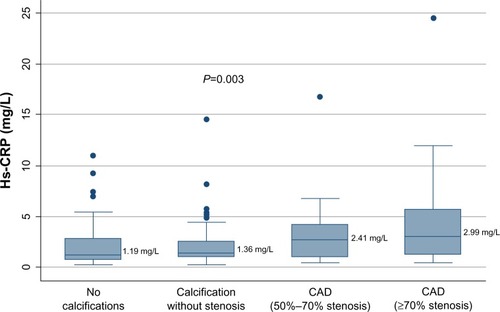Figures & data
Figure 1 Flow diagram illustrating the inclusion process.
Note: CAD50 refers to subjects with ≥50% coronary artery lumen diameter stenosis.
Abbreviations: ET, exercise test; CAD, coronary artery disease; CABG, coronary artery bypass grafting; PCI, percutaneous coronary intervention; hs-CRP, high-sensitivity C-reactive protein; CTCA, computed tomography coronary angiography.
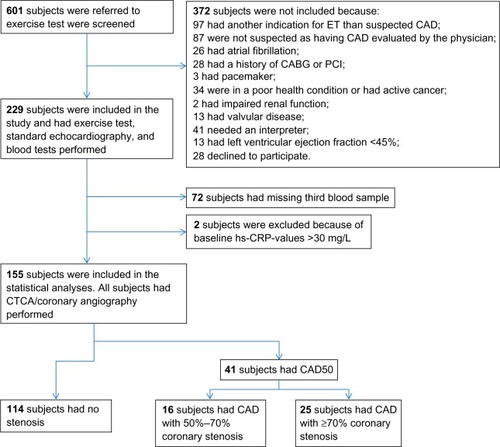
Table 1 Baseline variables in all study subjects and divided in non-CAD and CAD50 subjects
Table 2 Stress test results in all study subjects and divided in non-CAD and CAD50 subjects
Table 3 Multivariate linear regression analysis with Ln hs-CRP as dependent variable
Figure 2 Box plots showing median hs-CRP levels.
Notes: Shown are subjects with hs-TnT ≤3.00 pg/ml (n=79), subjects with hs-TnT levels between 3.00 and 7.26 pg/ml (n=38), and subjects with very high hs-TnT levels >7.26 pg/ml (n=38).
Abbreviations: hs, high-sensitivity; CRP, C-reactive protein; TnT, troponin T.
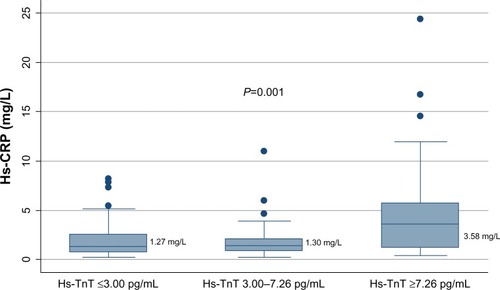
Table 4 Multivariate logistic regression analysis with CAD50 as dependent variable
Figure 3 Box plots illustrating baseline hs-CRP in non-CAD subjects and CAD50 subjects.
Note: CAD50 refers to subjects with ≥50% coronary artery lumen diameter stenosis.
Abbreviations: hs-CRP, high-sensitivity C-reactive protein; CAD, coronary artery disease.
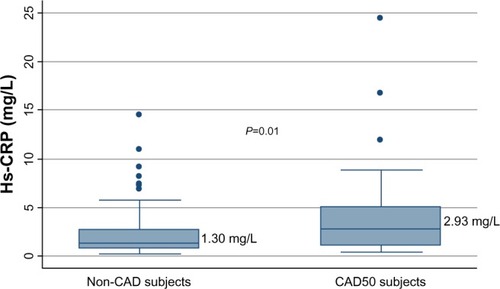
Figure 4 Receiver operating curve illustrating baseline hs-CRP and CAD50.
Note: CAD50 refers to subjects with ≥50% coronary artery lumen diameter stenosis.
Abbreviations: ROC, receiver operating characteristic; hs-CRP, high-sensitivity C-reactive protein; CAD, coronary artery disease.
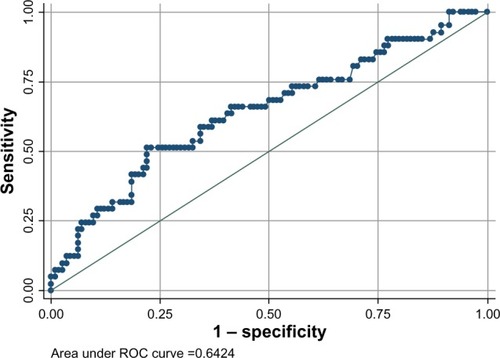
Figure 5 Median hs-CRP values in study subjects grouped in four groups.
Notes: The four groups are: no calcification in coronary arteries (n=64); calcifications without stenosis (n=50); CAD with 50%–70% stenosis (n=16); and CAD with ≥70% stenosis (n=25).
Abbreviations: hs-CRP, high-sensitivity C-reactive protein; CAD, coronary artery disease.
